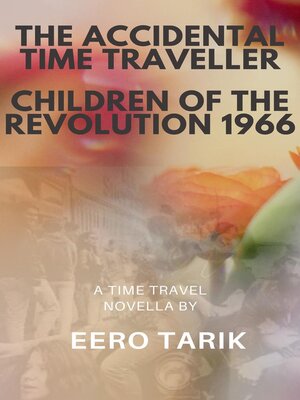The Accidental Time Traveller--Children of the Revolution 1966
ebook ∣ The Accidental Time Traveller, #6 · The Accidental Time Traveller
By Eero Tarik

Sign up to save your library
With an OverDrive account, you can save your favorite libraries for at-a-glance information about availability. Find out more about OverDrive accounts.
Find this title in Libby, the library reading app by OverDrive.



Search for a digital library with this title
Title found at these libraries:
| Library Name | Distance |
|---|---|
| Loading... |
In "The Accidental Time Traveller : Children of the Revolution 1966," time-traveling historian Elliot Mercer breaks his usual protocols by directly approaching a group of young people in Berkeley, California, 1966, openly identifying himself as a visitor from 2025.
"Excuse me," he said, addressing the group generally. "This is going to sound strange, but I'd like to talk with some of you. I'm a time traveller from the year 2025."
Rather than maintaining his usual cover, Elliot invites five volunteers to share their hopes, dreams, and aspirations, promising to trace how their lives unfold when he returns to the future.
Through conversations in a park, at a legendary Fillmore concert featuring Jefferson Airplane and the Grateful Dead, and at a late-night café, Elliot connects with these emblematic representatives of the counterculture: Michael, a physics student seeing connections between quantum mechanics and Eastern philosophy; Diana, an artist creating textiles that tell women's stories; Jimmy, a troubled young man hiding his poetry beneath a carefree exterior; Sarah, a Chinese-American anthropology student interested in indigenous knowledge; and Daniel, a politically active student organizing against the Vietnam War.
Upon returning to 2025, Elliot researches their life trajectories—discovering how Michael became a renowned physics professor bridging science and spirituality; Diana evolved into a celebrated textile artist; Jimmy overcame addiction to become a respected poet helping others find their voices; Sarah pioneered collaborative anthropology with indigenous communities; and Daniel transformed from radical activist to influential federal judge.
Finally, fulfilling a promise made in 1966, Elliot briefly appears to each person at significant moments in their later lives—a mysterious confirmation that connects past and future, showing how their youthful idealism evolved into lasting, if imperfect, contributions to social change.







